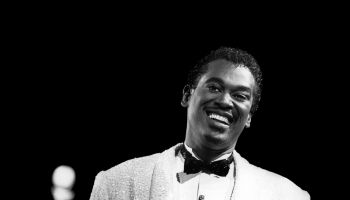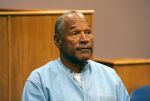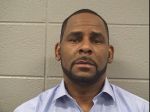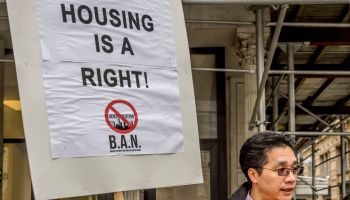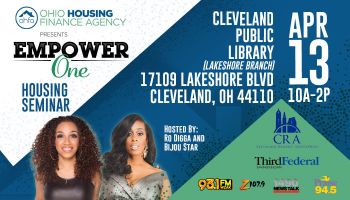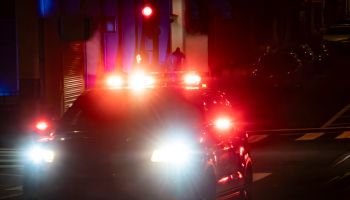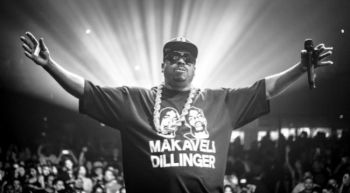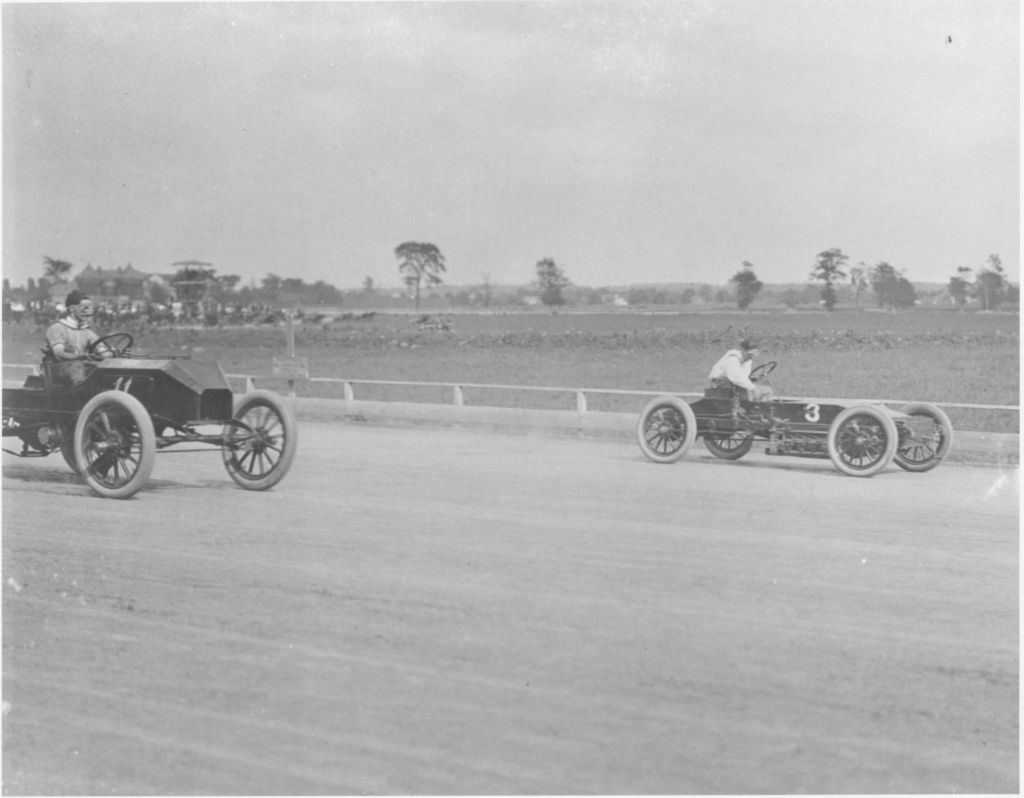
Source: Louis Van Oeyen/ WRHS / Getty
Race relations in Cleveland boiled into a deadly shootout, but the story remains untold — until now.
CLEVELAND — Something happened in Cleveland 50 years ago.
Racial tension erupted into the city’s streets. An ambush ignited a gun battle that terrorized an east side neighborhood. At least 10 people died. More than a dozen more were shot or wounded.
No one talked about it – until now.
WKYC is digging up the story that Cleveland tried to bury.
The conversation on the city’s race relations seems to stop at the Hough riots. The shootout in Glenville was buried in Cleveland’s history book, threatening a grim blemish on the city’s relationship between police and African-Americans. But by 1968, Cleveland had become a microcosm of racial division in America.
Monday marks 50 years since the deadly Glenville shootout. As racial tension continues across the U.S., those who were involved in the shootout are ready to discuss it. They sat down with WKYC to recall that night, what led up to it and how it became a smudge on the community.
Most concerning, many who were involved – both police and black nationalists – told WKYC they believe this could happen all over again, in the very near future.
The scene that night was one of utter chaos, with multiple shooting locations in a few-block radius, all happening within minutes.
There are also several perspectives on what happened.
‘Someone was trying to kill me’
Jerry Viola served the Cleveland Police Department’s robbery unit in the 1960s.
On July 23, 1968, he was on patrol with his partner in Cleveland’s Murray Hill area when they received a report of a tow truck driver who had become the target of gunfire.
The duo responded to the area of Beulah Avenue and Lakeview Road and encountered a police zone car under fire by two men armed with rifles.
Both cars reached Auburndale Avenue when Viola’s partner, Bob Bennett, fired his shotgun at a man armed with a rifle. The patrolmen bailed from their car to chase after the man.
“I could see tracers going by the car and everything. You could hear all kinds of rounds being fired,” Viola recalled.
Still, Viola and his partner were unaware of why they were under attack.
“We really didn’t know what was going on. We didn’t realize there were 12, 15, 18 guys out there with weapons and stuff firing at us,” Viola said.
Armed with a .38-caliber revolver, Viola had 12 rounds. He and his partner ditched their car and ended up behind an apartment building, where a gun battle with two other men followed. They exchanged fire before Viola returned to the car for more ammunition.
While retrieving the ammunition, Viola could see one of the patrol officers with his gun pointed at two armed men.
“I heard him holler at them to drop their guns and weapons,” Viola said. “That’s the last time I saw him.”
That officer, identified as Patrolman Willard Wolff, was one of three officers killed that night. Wolff’s partner, Ken Gibbons, was shot seven times but survived.
Viola put Gibbons over his shoulder and carried him around the side of his car, where he and Bennett placed Gibbons in the back seat. Viola backed the car out and drove toward Euclid Avenue to take Gibbons to Lakeside Hospital.
—
Leonard Sims was also in Glenville that night. He was at Lakeside Hospital when he received the call.
Sims, an investigator in the Cleveland Police Department auto crimes unit, responded to Lakeview Road with his partner. When the pair reached a blind spot at Auburndale Avenue, the bullets came flying.
“First, all you heard was automatic weapons and bullets flying off the car,” Sims recalled. “Both myself and Earl Brown, we ducked down, then I peeped up to see where I was going and all we could hear was bullets hitting off the car.”
Sims said at least 30 bullets from automatic rifles and shotguns struck his car. Thirteen of those bullets pierced his bumper, destroying the fuel pump. One bullet just missed Sims’ partner by a foot.
Sims had no idea why he was being fired upon and his radio broadcast had only warned him of men armed with guns. There was no indication that dozens of men were waiting with full automatic weapons.
“I was mad, because someone was trying to kill me,” Sims said.
Sims and his partner found themselves in a gun battle with three nationalists behind an apartment building. When one of the men aimed at him, Sims fired his shotgun.
“That’s the first time I ever shot anybody,” Sims said. “First and last time.”
—
Pete Ventura was a rookie cop serving Cleveland’s sixth district in 1968. The former Marine worked at Lincoln Electric in Euclid prior to joining the force.
He responded to Lakeview Road and Superior Avenue and left his car, which was eventually burned during the night.
Armed with a shotgun, Ventura responded to the apartments from where the bullets were flying.
“They came running down the alleyway. One took a shot at me. He missed me, because running, you can’t hit nobody running with a gun. Well, I shot him and he went down,” Ventura recalled.
A nationalist began firing down on Ventura from an apartment window, so Ventura shot him out of the window. He shot a third nationalist running through the alley before firing at a group of men shooting from behind the apartments.
“Later that night, I saw them carrying them away in white sheets,” Ventura said. “I don’t know who was carrying them, it was dark, but it wasn’t policemen.”
Another nationalist started shooting at police from a half-window inside a nearby home. Ventura snuck into some bushes against the house and the man stuck his hand out the window to shoot down at Ventura, narrowly missing his leg.
“The dummy stuck his head out and looked down at me,” Ventura said. “When he looked down at me, all I did was hit the trigger.”
Shooting continued from the second floor of the home, pinning several officers down outside. Ventura says he smashed through a large picture window at the front of the house and expelled tear gas inside, causing the home to catch fire.
The nationalists inside the home had barricaded themselves on the second floor with mattresses and box springs on the stairway, trapping them with the blaze.
“I got out and I could hear the people inside screaming. They couldn’t get out,” Ventura said.
After fleeing the burning home, Ventura received word that an officer had been shot outside Lakeview Tavern. Ventura crawled on his stomach on the sidewalk toward the yard where the officer was lying.
Ventura recalled feeling moisture on his stomach as he crawled. He later realized it was blood from Patrolman Wolff.
Ventura says no training could have prepared him or his fellow officers for an attack like that. They had no idea why they were targeted, nor did they have radios to communicate on the ground.
The shooting lasted all night. It was so constant, Ventura doesn’t know how many bullets were aimed at him. He could hear the shots and felt bullets striking the ground next to him, but he said his aggressive approach helped him survive the night.
“You never hear the shot that kills you,” he said.
Fred Ahmed Evans
Fred Ahmed Evans was born Fred Allen Evans in Greenville, South Carolina. He moved to Cleveland in 1931 and joined the Army until he was honorably discharged in 1952.
Evans reenlisted in 1955, but was soon discharged and returned to Cleveland, where he became a radicalized follower of Malcom’s X’s teachings, forming the Black Nationalists of New Libya within Cleveland.
Evans rose to leadership within Cleveland’s black nationalist community, opening the Afro Culture Shop and Bookstore in Glenville, where he cultivated interest in African culture and activism as Cleveland’s racial divide became inflamed.
Historic photos show Evans meeting with Dr. Martin Luther King Jr., who visited Cleveland every other week during the summer of 1967.
Malcolm X also spent time in Cleveland, where he gave his infamous “Ballots and Bullets” speech at Cory Methodist Church on E. 105th Street. Dr. King also spoke there in 1963. Evans became a follower of Malcolm X.
Though Evans’ beliefs countered Dr. King’s preachings of peace and unity, it’s believed that King’s assassination triggered Evans’ disdain for the white establishment. Soon after King’s death, the Black Nationalists of New Libya began collecting firearms inside Evans’ Auburndale Avenue home, leading police to conduct surveillance on the area.
Historians say Evans felt threatened by police presence, which may have ignited the shootout. Akili says he does not believe the shootout was premeditated, but conflicting reports suggest that Evans began amassing guns in the days just before the shootout.
Viola said he wondered if the nationalists began shooting at the tow truck driver because he wore a city uniform that resembled a police officer’s.
On the night of July 23, 1968, Evans led the ambush on police officers, though some recounts from that night say Evans let his followers do much of the shooting.
READ MORE: WKYC.com
Article Courtesy of WKYC Channel 3 News Cleveland
First Picture Courtesy of the Encyclopaedia Britannica and Getty Images
Second Picture Courtesy of Louis Van Oeyen, WRHS, and Getty Images

